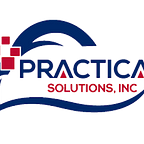Workplace Modernization Trends
The pandemic has led to an evolution in workplace trends in 2020. Businesses across the globe have been forced to adapt to remote work, and implement strategies and operations that sync with the new norm. As we approach 2021, how will the landscape further evolve? The ‘new normal’ has called for increased technical tools to ensure personal productivity, and seamless collaboration and communication in the professional space.
What has progressively become a cornerstone of most organizations’ digital workplace infrastructures, is now an immense dependency on cloud technologies and is expect to further rise in 2021. The current scenario has also resulted in a complete flip in conclaves, trade events, conferences and meetings. In-person events and meetings which were a norm, with virtual events being the rarity until Covid-19 has now turned on its head. ‘Social distancing’ has resulted in ‘economic distancing’ as well, such that businesses have shifted to virtual alternatives. This also means a massive shift and rise in tech-driven, cloud-based solutions, tools and applications that can aid businesses.
So, what are the key trends and changes that can be expected in the coming year? Let’s find out.
- Remote working will continue to be a preference
Over the years remote work has been on the rise, and 2020, of course, saw a major spike in this working style. Statistics show that over 50% of meetings have remote attendees. This also means an increase in demand for advanced technical tools and applications used by organizations. Cloud, for example, is a popular trend because of the sophisticated features it comes with, leading to organizations doing away with outdated systems. And, of course with employees forced to transition to a digital mode.
“In the year 2020–21 workplace and workforce will become more digital and work from home (WFH) a new normal. Today, lots of IT companies are moving towards work from home model and a study says by 2025, 60% of companies and their workforce will be working from home.”
2. The demand for Cloud
Research shows that not only have majority of organizations moved to the cloud to boost employee productivity, but 81% of enterprises have also developed multi-cloud strategies or are in the process of shifting to one. The SaaS industry is forecasted to generate $157 billion by this year end. And, there are no signs of this industry slowing down.
Newer, more advanced technologies are being developed while older companies are updating their software and introducing features that cater to the current demands. It is expected this will call for new training strategies, and software’s that will make onboarding easier.
“2020 trends show, whether it’s through AI, the internet of things (IoT), data ecosystems or how we organize around teams and lead, enterprises are reaching new levels of productivity and innovation.”
Source: DXC. Technology
3. API-adoption to ease the transition to multi-cloud
Several global organizations have also moved towards API-led application and containerization in an attempt to make it easier to navigate between multiple clouds. While a multi-cloud strategy is most efficient, it is also challenging to use at times.
API-led applications and containerization will make it easier to use multi-cloud platforms, access data and navigate several computing environments.
4. Digital First
According to the Gartner 2020 Digital Workplace Survey, 68% of respondents agreed that more C-level execs have expressed involvement in the digital workplace since COVID-19,” says Matt Cain, Distinguished VP Analyst, Gartner. “From meeting solution software, to enterprise chat platforms, to desktop-as-a-service, the pandemic rapidly elevated many digital workplace technologies from nice-to-have to must-have status.”
5. Prioritizing cybersecurity efforts
As every aspect of our lives — personal and professional — go digital with advanced technologies, the risks get higher. Hacking, phishing, and other such cyber threats are on the rise. Hence, the need and attention to data, employee and client security. Enterprises are looking at tools and strategies to protect data, and to have backup solutions in place, in case of human errors.
6. Digital Adoption Solutions
Digital Adoption Solutions (DAS) has enabled an easier and more efficient transformation to digital workplaces. This will be another area where enterprises will look to invest in the coming year, as an attempt to boost productivity and output amongst employees.
DAS uses training methodologies, digital learning tools and in-app, contextual training material to drive digital knowledge and know-how for employees and organizations. Investing in DAS has proven to reduce onboarding time, upskill employees, reduce dependency on colleagues, and bring about a shift in attitude towards the evolving digital-first landscape.
Practical Solutions is your trusted partner for Cloud and Cybersecurity Solutions. Turning chaos to order since 1997, Practical Solutions offers a range of services from Workplace Modernization and Cloud Migration to Network Transformation and Security Optimization. We are also a trusted partner of Microsoft and Lenovo, offering products such as Office 365, Dynamics 365 and Microsoft 365, as well as some of the best Lenovo work from home laptop solutions. Contact us today to learn more or schedule a consultation for any requirement.
